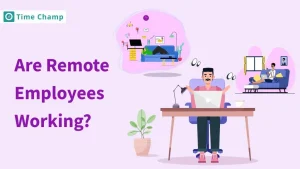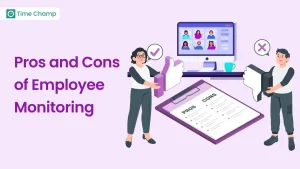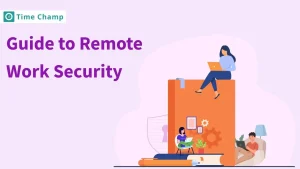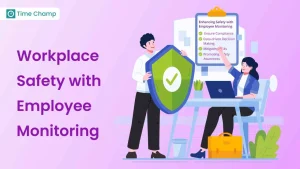Many businesses implement different strategies to improve their employee’s productivity, but sometimes they may not work out.
Isn’t that annoying? But don’t worry-
Stealth Tracking is one method that has recently gained a lot of attention. In this blog, we’ll explore how it can make a positive impact on productivity.
What is Stealth Monitoring?
Stealth monitoring, also called hidden monitoring, is a way to monitor employees without their awareness. Once installed in the work computers, the software works quietly in the background. It starts automatically when the employee logs in, tracking what activities they do on the computer.
At workplaces, it monitors how employees use computers, what websites they visit, and their emails. The goal is to collect information on how well employees work and whether they follow company rules and security policies.
How Stealth Tracking Works?
In the context of employee monitoring, here’s how stealth tracking works in detail:
Installation
During installation, administrators make specific changes to track certain kinds of information per the company’s regulations and surveillance objectives. This proactive approach ensures that the software runs in the background from the moment, the user logs in and is productive without violating privacy.
Automatic Logging
Once installed, stealth tracking works in the background and automatically logs data. Automated logging is useful in making sure that all the information is recorded accurately without human intervention. This is useful in idenetifying security risks, compliance issues, or performance issues in the organization.
Hidden Operation
It works in stealth mode to ensure that employees do not notice it. It runs silently in the background and doesn’t display any icons. Thus, making it hard to detect and remove without root access. The whole activities done by employees are tracked silently without notifying anything to the users.
Data Collection
Stealth monitoring gathers information about the employee’s activities based on the organizational requirements, such as websites visited and apps they used, and tracking the activities of the employees during their work hours. It may also record typed messages or documents through keystroke logging, take screenshots at regular intervals, and monitor emails or messages sent within the organization. Some systems even monitor physical location through GPS tracking on devices provided by the company. All the collected data is kept secure and can only be accessed by the authorized personnel responsible for monitoring employees’ activities.
Reporting and Analysis
The information collected through hidden monitoring is analyzed and compiled into reports that contain useful information for the managers. Such reports may contain details about the activities of employees, employees’ performance, working hours, adherence to organizational policies and procedures, and security threats. This information helps make decisions, optimize workflows, and address issues that may impact organizational performance.
Benefits of Implementing Stealth Monitoring in Your Organization
Implementing stealth monitoring brings a lot of benefits if it is managed well and in the proper situations.
Enhances Security
Stealth tracking helps in improving security in your organization since it monitors the activities of the employees discreetly. This proactive approach helps prevent possible insider security threats before they become a major issue. Real-time monitoring of activities like web browsing, application usage, and emails allows organizations to identify any anomalous behaviour or activity. This capability is essential for the protection of data, prevention of internal threats, and compliance with the industry standards on data protection.
Improves Productivity
When you put stealth monitoring into practice, it gives a good understanding of the employee’s productivity and working habits. Organizations can understand how time is spent on tasks and which applications are most frequently used and thus, find out about inefficiencies or potential bottlenecks. It helps managers to understand the patterns of work and make necessary changes to the processes and resource allocation.
Policy Adherence
Stealth monitoring gives an idea about whether employees are compliant with organizational rules and regulations, concerning the use of technology and the protection of information. In this way, organizations can minimize the threats of non-compliance with the established policies.
For example, unauthorized access to personal data or misuse of the company’s assets. It also helps in preventing security breaches at the workplace while minimizing legal risks and penalties for noncompliance with organizational guidelines.
Minimizes Cyber-loafing
Cyber-loafing refers to the act of employees spending their time browsing the internet, social media, shopping, and non-work-related activities during working hours. It includes using the company’s internet and resources for their personal use and entertainment.
Employers often see this as a productivity loss and a huge distraction since they spend their time on unproductive activities. By implementing stealth tracking, you can gain deep observations of their activities since it is hidden and no one can able to find it.
Is It Legal to Use Stealth Employee Monitoring Software?
It’s one of the most common questions that arise for employers whenever they want to implement stealth monitoring. Well,
The concise answer is – Yes.
Isn’t implementing stealth monitoring against privacy law?
No.
Legally, the laws vary across countries but most of them are quite supportive to employers. Generally, employers have the right to monitor how employees use resources and working hours. As systems are an organization’s property, using stealth monitoring is a part of the organization’s right to ensure that the resources are used for work. It is recommended to take consent from employees when you are implementing stealth monitoring in employees devices. It is legal to perform stealth employee monitoring if it tracks during working hours only. However, stealth is just a mode in employee monitoring software that makes discreet tracking possible.
Conclusion
In conclusion, stealth tracking can significantly enhance organizational security and productivity by discreetly tracking employee activities. It helps improve security, ensures policy adherence, and identifies productivity bottlenecks. While legal considerations for monitoring vary, using such monitoring during work hours is generally permissible to protect company resources. Ultimately, stealth monitoring fosters a culture of accountability, helping in better resource allocation and overall efficiency.
Improve productivity and security effortlessly with Time Champ’s advanced stealth monitoring. Try it today!!
Signup for FreeBook a DemoYes, usually it is legal for employers to use stealth monitoring in company-owned devices. However, it is important to make sure that it is only used during working hours and does not intrude on the privacy of the employees too much.
Employers can track different activities including browsing history, applications used, emails sent and received (if on the company’s equipment), typed keys (in some instances), and location (if using the company’s equipment).
In general, stealth monitoring works discreetly to ensure that employees do not notice it. It does not display icons or notifications on the screen which cannot be easily noticed by the employees unless they have a technical background.
Stealth monitoring can help uncover areas of unnecessary activities, and distractions such as employees spending too much time on social media, and foster a culture of responsibility, which can lead to increased productivity.
Yes, stealth monitoring can improve security since it can help identify and prevent unauthorized entry, data leaks, and non-compliance, which helps protect the company’s confidential data and property.





